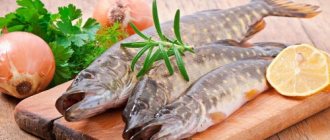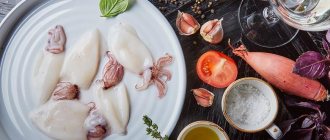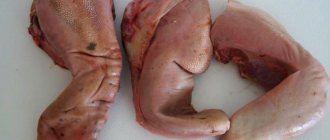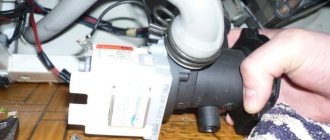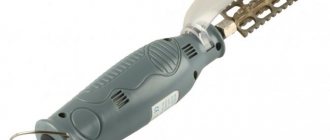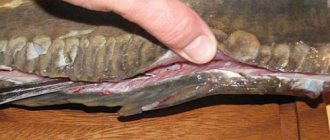There are plenty of recipes for preparing different dishes from pike fillet - in batter, fried with potatoes in the oven, famous cutlets, casseroles using foil (for fishing and at home).
The question “How to fillet a pike?” for “experienced” housewives it will not be a disaster, but those who are doing this business for the first time will have to tinker. I’ll try to make the job easier and tell you how to fillet a pike quickly and accurately.
[contents]
Let’s not discuss and decide whose task it is to prepare the fish product for cooking. As a confirmed bachelor, I don’t have to throw the problem onto the shoulders of my beloved, and therefore I am sure that a man should be able to do everything. And catch a fish, build a house, make dumplings, salt caviar, make moonshine and congratulate the girls on the holiday.
Let me start by saying that pike produces three pieces of excellent fillet. Don’t rush to throw away the “spare parts” left over from cutting fish. This is not only the basis of the fish soup, but also independent dishes. For example, a pike head seasoned with garlic is a delight for a fish-eating gourmet.
So.
How to cut frozen pike
If the pike is frozen, it should be cleaned without defrosting, using a large kitchen knife. Special knives - Yakut or Eventi - will cope with this task best and fastest. Such knives have one flat side and the other a standard, wedge-shaped side.
- Before you start cleaning, you should wear cotton gloves.
- First of all, frozen pike is removed from the freezer, or brought home from the street.
- You need to take the pike by the tail and position it so that the nose is pointing towards the floor.
- Then start cleaning the scales. The movements of the knife should be planing and directed from the tail to the head.
- It is best to securely fix the pike on the floor using a box. You can also install the nose of the carcass in an egg cassette.
Gutting
It is not difficult to gut a carcass if you follow some recommendations:
- Cut off the fins.
- Then cut out the cartilage located between the abdomen and gills.
- Make a cut in the belly from the head to the bottom. If the cut is deep, you can cut into the bile and stain the abdomen with it.
- Then you will need to remove the giblets, slowly cutting them off.
- Now you just need to remove the gills and finally remove the air bubble.
- Before proceeding further, you need to rinse the pike again.
Yandex pictures
This cutting option is used if it was planned to boil or fry the pike.
Why is pike useful?
- Calorie content of 100 grams of raw fillet is 80 kcal, boiled pike meat is 94 kcal.
- There are no contraindications to the use of pike. It can be included in the diet even for people with chronic diseases. The only limitation is individual intolerance.
- Pike is considered a dietary product. Its calorie content is only 84 kcal. There is practically no fat in pike meat. It has been proven that pike meat contains strong natural antiseptics. They help strengthen our immunity and help neutralize infections.
- This is why pike products are recommended to prevent colds. Pike is classified as a low-fat fish and is included in the diet menu.
- Pike contains many vitamins and minerals - phosphorus, potassium, sodium, calcium, iron, magnesium, zinc, sulfur, chromium, copper, fluorine, manganese, iodine, molybdenum, nickel, cobalt, vitamins B1, B2, B6, B9, C, E, A, RR.
- Regular consumption of pike meat increases the level of B vitamins in the body. Pike is useful in all forms - it can be baked, boiled, fried or stuffed. In any case, it will help reduce the possibility of arrhythmia.
- Pike is both a tasty and healthy fish; adults and children enjoy dishes made from it. This is a dietary food, because pike meat contains only 3% fat.
- Nutritionists recommend pike meat for anyone who wants to lose weight and maintain the result. Pike is rich in protein, and it is digested much easier than the animal. Consequently, consuming pike meat will be of great benefit to people with chronic stomach diseases.
- The ancient Romans did not eat pike dishes, but modern Englishmen are very fond of the meat of this fish. Most often, pike appears on the tables of French women, who carefully monitor their figures.
- Pike fillet is quite meaty. It makes good cutlets, teloe, quenelles, and rolls. Stuffed pike is also tasty. Stuffing it is very easy, because the pike skin is removed entirely in one motion. Pike fried and baked in sauce is very popular due to its taste.
Removing mucus
How to completely get rid of mucus? You need to follow a number of simple steps:
- washed thoroughly with water (you can use a special washing brush);
- the fish is immersed for 30-40 minutes in a bowl of water;
- rinse thoroughly with water again;
- gutting should be done very carefully to avoid damage to the gallbladder.
- cleared of scales.
Tip: for greater efficiency in getting rid of mucus, you can rinse the carcass under warm or hot water.
Harm from pike meat
- Scientists have not identified any substances contained in pike that are hazardous to human health. Its meat is absolutely hypoallergenic.
- The only thing worth paying attention to is where the fish were caught. The meat of any fish can accumulate various harmful substances. If pike was caught in a dirty pond, it may be dangerous to eat.
- Pike dishes are also considered unacceptable by some Orthodox Muslims. They consider pike to be the same unclean food as pork. Ancient sources say that the reason for this belief is the cross visible on the muzzles of large pikes.
- It goes without saying that pike meat should not be consumed by allergy sufferers and people with individual intolerance. Despite the dietary properties of pike, eating it in large quantities can contribute to the appearance of excess weight.
- Those on a diet should steam pike fillets and eat them in moderation.
- Any fish can be infected with parasites, and pike is no exception. Eating it raw is strictly prohibited. Any heat treatment for 20-30 minutes - frying, boiling, baking - makes the fish absolutely safe.
Pies and pies with fish are baked for at least 40 minutes. If pike is salted, it will be ready for food in no less than 5 days. When cutting pike, you should wear gloves and use a separate board.
Tips for cutting up a carcass
Having received the cleaned meat of low-calorie tasty fish, you need to take care of further parsing of the carcass .
You can prepare meat for minced meat or for frying chops in batter or cutlets. To understand how to cut pike into cutlets, you should use the following tips:
- Cut off the head below the pectoral fins.
- Make a cut along the dorsal fins along the ridge to the ribs (to do this, you may need to repeat the cut several times).
- Having reached the side line, cut the sirloin from the rib bones.
- Use tweezers to remove bones from fillet.
- Using a sharp knife, carefully cut off the skin at an angle, holding the meat with your hands.
Easy and quick recipe for pike cutlets
Such cutlets do not require a large set of products; they use what is in every home.
Ingredients:
- pike fillet - 500 g;
- 1 medium onion;
- 2 slices of white bread without crust;
- 1 egg;
- 0.5 glasses of milk;
- salt and black pepper to taste.
Cooking steps:
- cut the fillet into pieces;
- soak bread in milk;
- grind fillet, bread and onion in a meat grinder;
- Mix the egg into the minced meat, add salt and pepper, and mix well.
- put in the refrigerator for 15-20 minutes and stir again;
- form cutlets approximately 1.5 centimeters thick;
- fry on both sides in a hot frying pan in vegetable oil.
The most delicious and tender cutlets are obtained if you cook them in butter. Ghee will also work.
Separation from bone
Before preparing a carcass for processing, the main bones should be properly removed. This will make it easier to shape good fillet pieces.
Below are the basic steps for removing bones from a pike carcass:
- the prepared and cleaned fish carcass is thoroughly washed in cold water;
- A long cut is made from the head (just below the gills) to the caudal fin. The blade should have a horizontal slope;
- the first part of the carcass is set aside;
- on the reverse side (with the remaining head, ridge, tail), the ridge in the middle part is picked up with a knife. The blade is drawn towards the tail. Then we head towards the head;
- the carcass is cut at the head;
- after these steps, two pieces of meat without the main bones remain. The head and ridge are then completely separated.
Tip: the remaining head and ridge can be used to prepare fish soup or fish jellied meat.
Parasites that may be in pike
Thin red worms can be found in pike. However, this does not mean that she is infected with opisthorchiasis. Worms longer than five centimeters are called parasitic nematodes phylomeres. They live in the pike carcass, next to the fins and head. They do not pose a danger to humans.
Any freshwater fish can be infected with Eustrongylides. It is easily confused with phylometra. It is found in meat, caviar and milk of pike, perch and sturgeon and salmon fish. This parasite looks like round capsules.
Pike can also harbor very tiny helminths. Such parasites are found in the skin not only of pikes, but also of any other fish. They provoke nanophyetosis in people. They have a detrimental effect on the gastrointestinal tract of humans and animals.
The anisakiasis parasite lives in the gastrointestinal tract and muscles of pike and other fish. Signs of human infection with this helminth are fever, severe allergic reaction, and stomach damage.
The Chinese fluke causes clonorchiasis, which affects all types of fish. This is a very dangerous disease for humans. The symptoms are similar to opisthorchiasis.
Pike become infected with opisthorchiasis when they live with carp fish. Pike eat infected fish along with parasites.
You can often hear from fishermen that pikes do not have opisthorchiasis. You don't need to believe this. It is easy to become infected by eating pike meat.
Skin removal
After cleaning the scales and removing the entrails, an incision is made next to the gills. It should not reach the back of the carcass. After this, you can move on to the skinning process.
It is more convenient if this procedure is carried out with four hands. The first one holds the fish's head with a napkin (to prevent it from slipping). This can only be done in the correct (vertical) position. And the second one carefully lifts and removes the skin with the “stocking” down.
How to quickly cut a pike and remove the skin correctly? A step-by-step description of the process can be found below:
- Near the incision (next to the gills), pry it off with a knife blade. You should lift it slightly.
- By carefully lifting the skin, the stocking is pulled away from the tail.
- The area near the fins is cut from the inside with scissors. This will help not damage the integrity of the skin.
- Carry out a similar procedure in the area of the caudal fin.
If you are preparing a stuffed fish recipe using skin, you should first turn it back to its original position. You can also use the skin to form fish sausages. They can be fried in a frying pan.
If the skin is damaged, small holes can be sewn together using cotton threads. Before serving the finished dish, all strings are cut and removed.
There is no point in removing the layer of meat remaining on the skin. To avoid additional damage and thinning of the stocking.
Tip: to remove the skin from frozen fish, you can first pour warm water over the carcass. This will speed up the defrosting process.
What to do with an infected pike?
If parasites are found in the abdominal cavity or gills, eating such fish is strictly not recommended. Despite the fact that most likely you are seeing a safe phylometra. Pike meat is already saturated with toxins secreted by parasites. It lost its taste and became completely inedible.
This pike can be cooked longer and given to pets. In the muscles of the fish you can find large dense round capsules, about 5 mm in diameter. This is Eustronohylides.
Inside the balls are long thin worms. Their size reaches five centimeters. If there are very few parasites, then the pike can be eaten by carefully clearing it of capsules and boiling it well.
It is impossible to see opisthorchid larvae with the naked eye. In order to avoid accidentally getting infected, it is enough to remember a few simple rules.
Preparatory work
In warm weather, if possible, it is better to clean fish outside, where there are no problems from scales flying to the sides and splashes. In the kitchen, before cleaning the pike, you need to prepare the place and the necessary supplies in advance so that you do not have to wash your hands several times during the work.
- Absolutely all utensils and accessories must be removed from the cutting table and the nearby gas stove; it is better to cover the stove and nearby furniture with paper or polyethylene.
- Empty the sink completely, prepare a stopper so that you can fill the sink with water (or use a larger container).
- Prepare a cutting board of sufficient size. It is desirable that it be made of plastic or glass. A fishy smell is absorbed into the wood, which will be difficult to get rid of later.
- To prevent the board from sliding on the tabletop while working, you can place a damp cloth or an old towel under it.
- You will need a cutting knife, preferably with a wide blade. You can clean the pike with the same knife, but it is more convenient to use a special cleaner, which you can buy at a hardware store. It is best if it comes with a container for scales.
- Wearing work gloves on your hands (at least on the left one) will make it more comfortable to hold the fish and reduce the likelihood of getting hurt.
- You can prepare a couple of pinches of coarse salt. If you sprinkle it on the tail of a pike, it will not slip out of your hands while working.
It is advisable to carry out these preparatory work when cutting any fish that has not been scaled.
How to cut up pike, cook it and not get infected?
Many argue that pike cannot be infected with opisthorchiasis. However, larvae may be present in the fish's digestive tract. Pike are predators and may well eat infected fish from the carp family.
The intestinal walls are easily damaged. The larvae then end up in the meat. Pike can also be affected by helminths, which are very dangerous to humans.
Follow the rules listed below and stay healthy:
- It is recommended to use thin rubber gloves when handling raw pike. Do not touch your lips, face, or other foods while cleaning fish. Then be sure to thoroughly rinse the knife and board, and wash your hands thoroughly.
- To minimize the risk of infection and subsequent disease, you need to follow the rules for preparing pike: salt it without sparing salt. There should be salt even inside the belly of the fish. Large pikes are cut along the spine and spread out. Pike is salted for at least 5-7 days.
- After the pike is thoroughly salted, you can start drying it. First, excess salt is removed; to do this, the pike needs to be washed and soaked in water.
- If you want to freeze a carcass, you will need a freezer with a temperature no warmer than -28C. Pike frozen for at least 20 days is considered safe. Most parasite larvae die at low temperatures
- Fresh pike meat should be boiled for 20 minutes. For best results, fish can be cut into pieces weighing 150-200 g.
- For frying, the pike is cut into pieces about 5 cm thick and cooked for 20-25 minutes.
- If the fish is frozen, then in order for it to cook evenly, you need to defrost it completely before cooking.
- You need to bake pike or smoke it using the hot method until the meat begins to fall away from the bones. This will take 20-30 minutes. Pike pies will be ready in 40-60 minutes.
- To be completely sure that smoked or dried pike is safe, it is better not to buy ready-made pike, but to make it yourself from fresh fish. It is strictly forbidden to eat dishes containing raw fish.
That's all. My article has come to an end. Good luck with your fishing and see you in new articles.
For fillet
To make some dishes, it is not enough just to peel the scales from the pike and remove the giblets from it; you also need to fillet it. This is quite simple to do, this procedure will take about 10 minutes.
Yandex pictures
- First, you will need to prepare the fish as described above, namely, clean it of scales, remove all the giblets, etc.
- Then place the cleaned fish on a plate; you can remove the head and tail part for convenience.
- Next, make a cut with a knife along the outer part of the fish along the ridge. There is a fin on the pike ridge; you need to cut above it, so the knife will pass along the bones of the back and remove the meat.
You need to carefully remove the meat so as not to touch the bones. Using the method described above, we cut off the meat from the back along the entire length. It will turn out that one tenderloin will be in your hands, and the other half of the carcass will remain on the board - the fillet meat on the backbone.
Then you need to divide the second fillet. Place the pike comfortably and use a knife to cut the meat from the bones.
After all, it contains a large number of small bones, they need to be extracted as much as possible. Here you can use ordinary cosmetic or culinary tongs. Remove the bones, holding the fillet with one hand to prevent it from tearing.
This will result in 2 fillets on the skin. If desired, the fillet meat can be cut from the skin. Then you need to transfer the meat skin side down, separate the skin from the fillet, and then cut it off using a knife.
Yandex pictures
Cleaning in nature
Processing pike on a hike differs from the procedure at home except in limited comfort, also:
- To speed up the cleaning procedure, the fisherman needs to heat water in a pot in advance and pour it over the pike.
- Afterwards, you should wash the carcass with plain water, then proceed to remove the scales.
- Then the fins are cut off and the gills are removed.
- The abdomen is opened and the giblets are removed.
- If necessary, the head is cut off.
Yandex pictures
